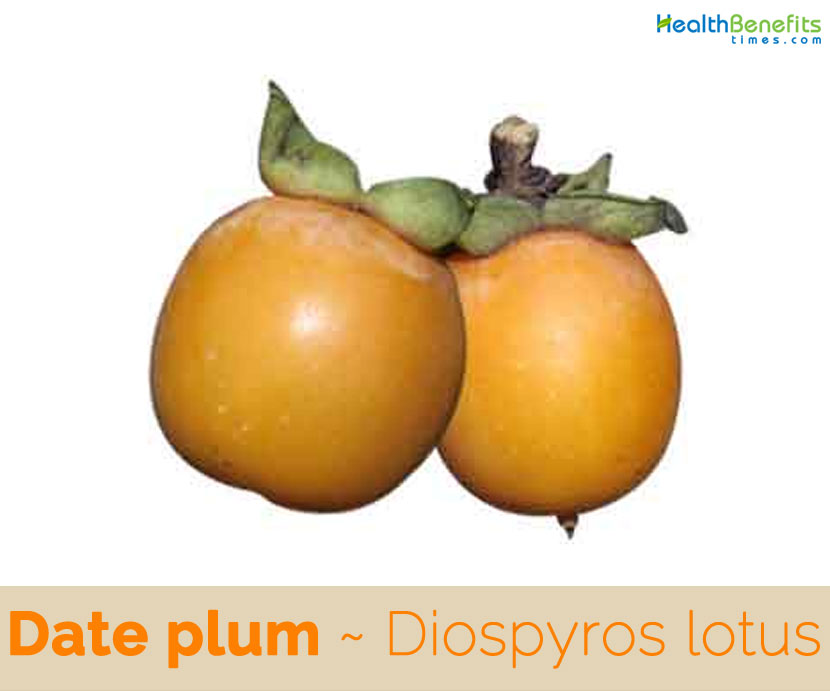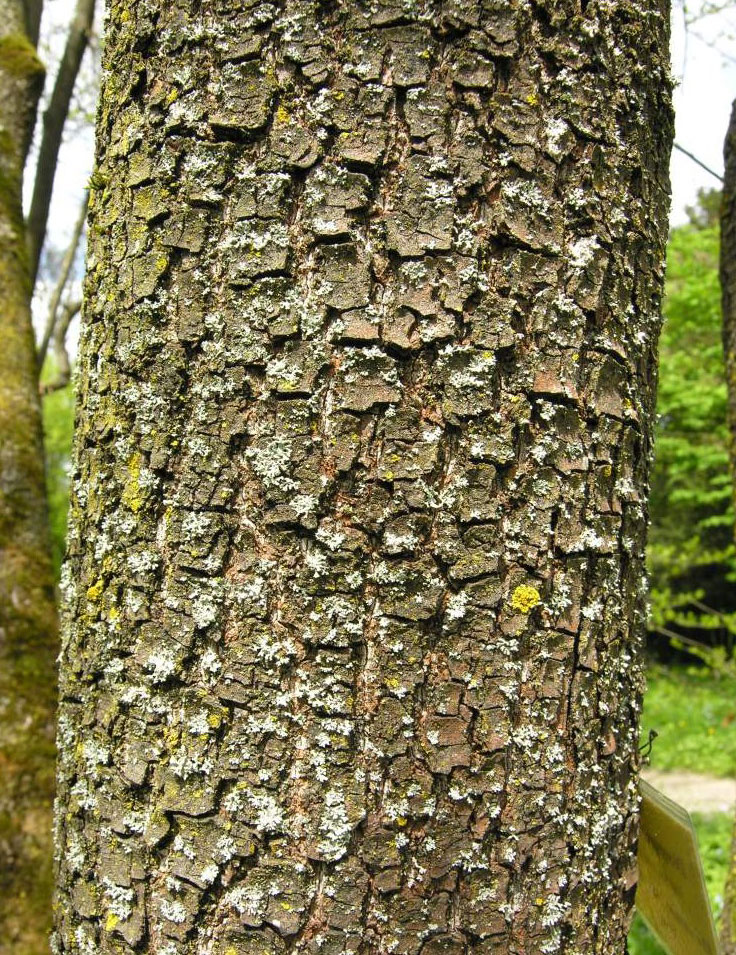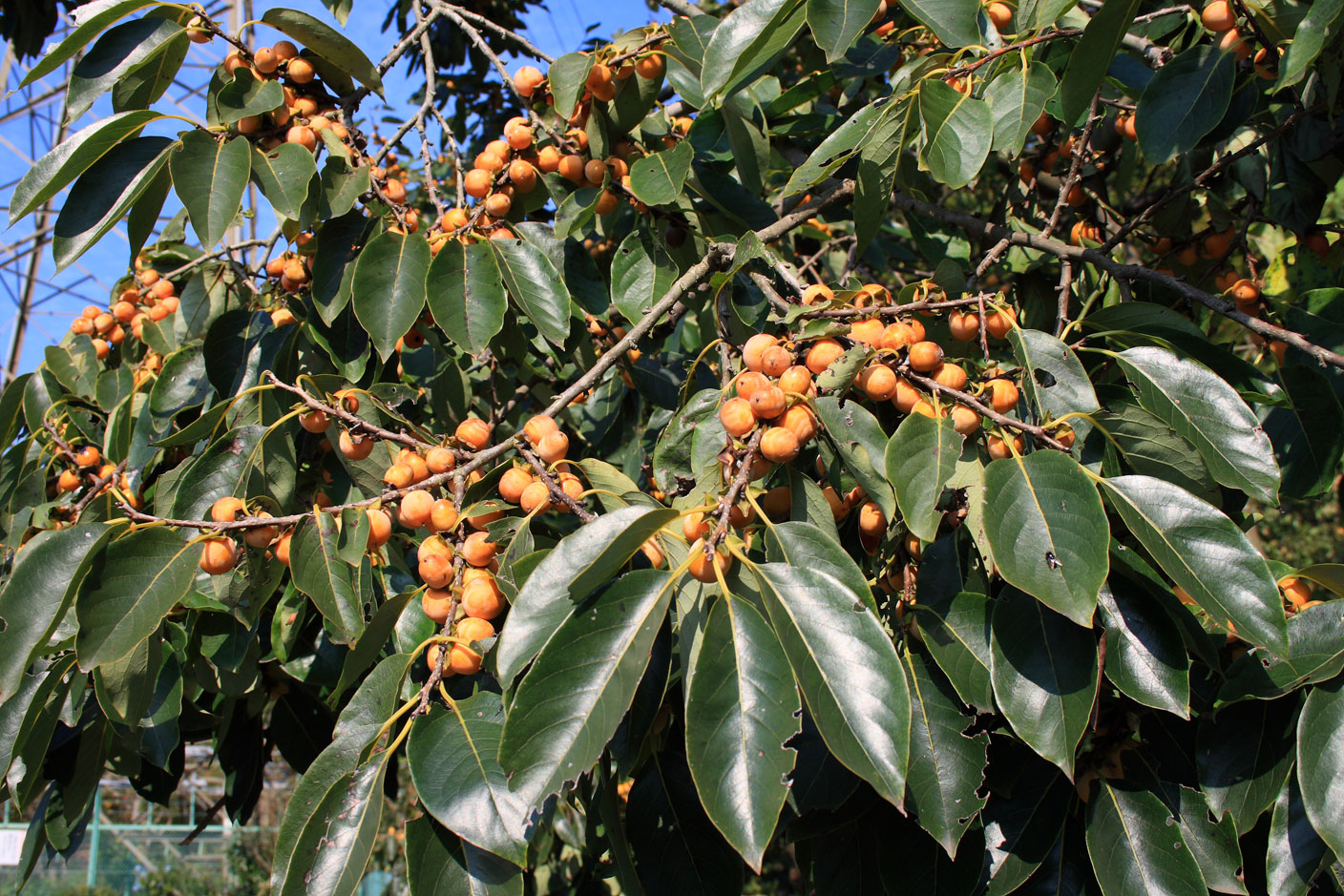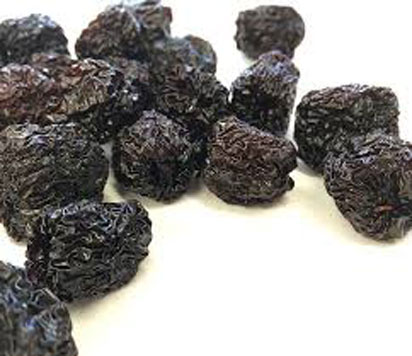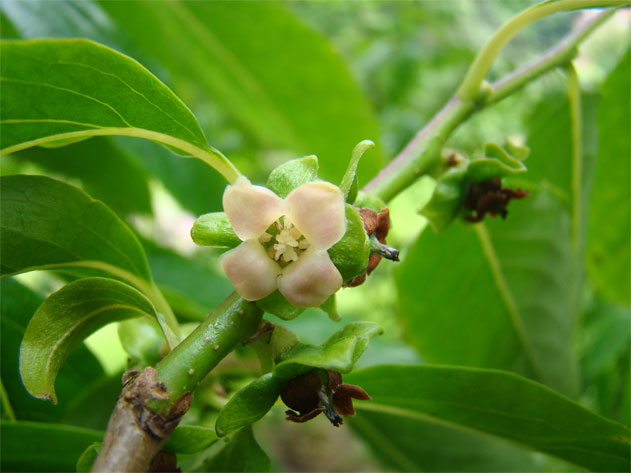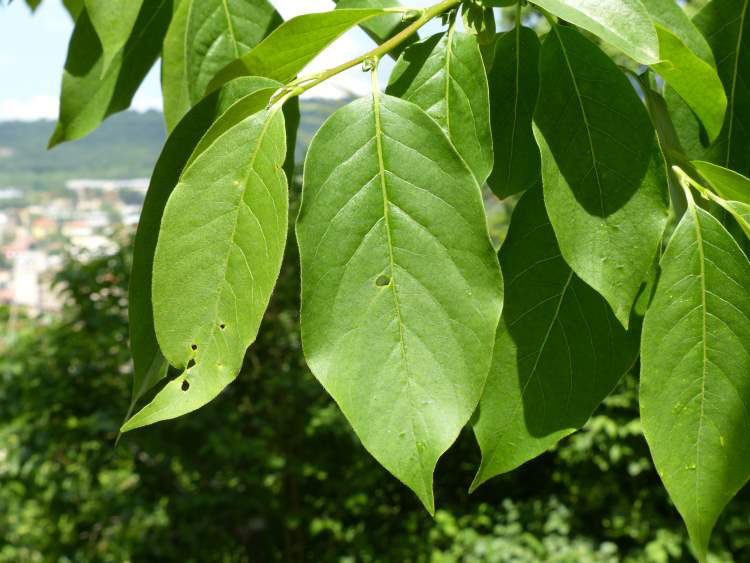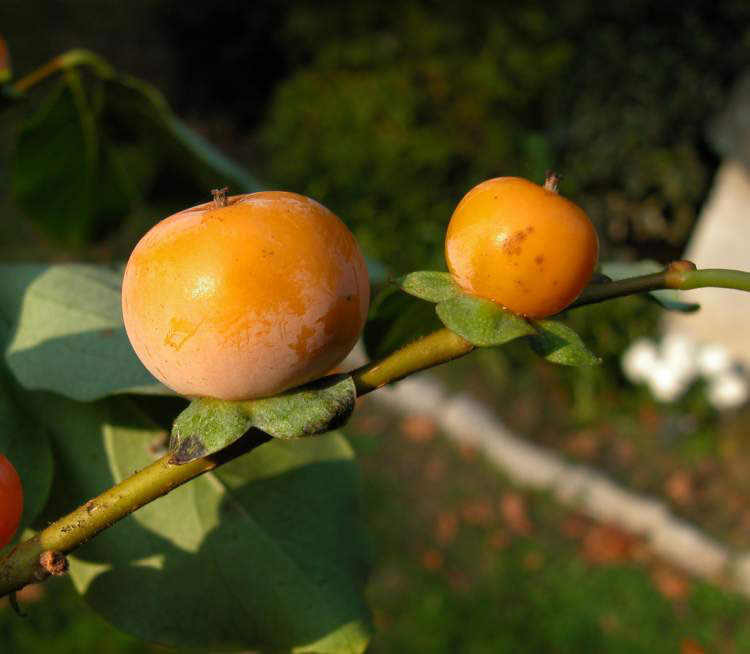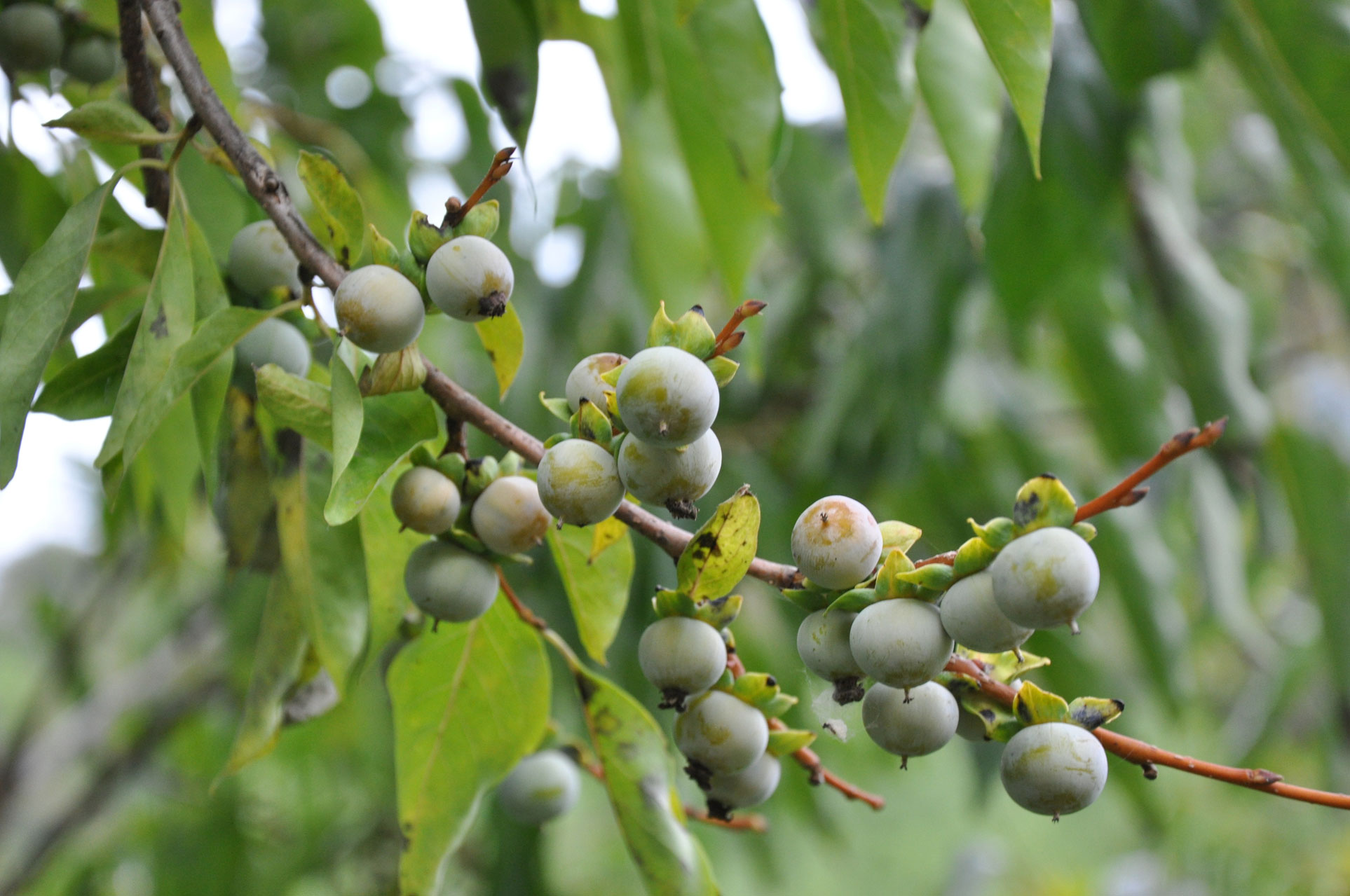| Date plum Quick Facts |
| Name: |
Date plum |
| Scientific Name: |
Diospyros lotus |
| Origin |
Southwest Asia and southeast Europe |
| Colors |
Green when young turning to yellow as they mature |
| Shapes |
Berries with juicy flesh, yellow when ripe, 1–2 cm in diameter |
| Taste |
Astringent, Sweet |
| Health benefits |
Beneficial in treating fever, anxiety, stress, diarrhea, hiccups, asthma or lung infections, brain cancer, tumors |
Date plum scientifically known as Diospyros lotus is a tree species in the genus Diospyros which contains approximately 763 to 793 species and belongs to the family of the Ebenaceae (Ebony Family). The plant is considered to be one of the oldest plants cultivated by humans. The plant has an extensive native range, from subtropical areas of southwest Asia all the way to southeast Europe. It is very hard to establish today the actual native range of the species. The modern English name was given because the fruits taste like a cross between a date and a plum. The Latin name given to the entire genus comes from ancient Greece, when it was known as God’s fruit. Date plum, Caucasian persimmon, lilac persimmon, American persimmon, Common Persimmon, Sugarplum, Possumwood, Lotus persimmon and Lotus tree are few of the popular common names of the plant.
There are two main varieties of fruits, which can be either purple or between yellow and orange in color. Both types are harvested after their skin softens and becomes darker. Ideally, the date plum fruits will be golden orange or dark purple, almost brown. A very useful sign that the fruits are ripe and ready to be harvested is the sweet aroma that comes from the trees as the skin of the date plums becomes mushy. The ripe fruit should be very sweet. If it is slightly sour, then it was picked too early. Date plum is harvested from the wild for local use as a food, medicine and source of materials.
Plant Description
Date plum is an attractive, slow growing, spreading and deciduous tree that can reach a maximum height of 30 m but typically is about 15 m tall. The plant grows best in well-drained loamy soil. It will tolerate acid, alkaline or neural soils but will not thrive in chalky, clay or very dry soils. It doesn’t like soils with poor drainage or too much moisture. Stem is erect with gray-green bark that breaks down as the trees become older.
Leaves
Leaves are shiny, leathery, and elliptical to oblong, rounded to broadly cuneate at base, up to 6-12 cm long and 2.5-5 cm wide with pointed ends and pubescent underside. They do not become yellow in autumn, although they fall with the first cold days of this season.
Flower
Date plum is a dioecious plant with male and female flowers growing on different trees. Male flowers are produced on shoots in groups of up to three, while the female flowers are solitary and hang down in rows, both of which bloom from June to July. Calyx with 4 short, acute, ciliate lobes is villous within. Corolla is reddish or greenish-white, with recurved, rounded, ciliate lobes 1/2 as long as the tube. At least both a male and female plant will be required to get seeds. However, the female tree can produce seedless fruits in the absence of a pollinator.
Fruit
Fertile flowers are followed by berries with juicy flesh, 1–2 cm in diameter. Fruits are initially green turning to yellow as they mature. Seeds with thin skin and a very hard endosperm are present.
History
Date plums date back to the time of civilization and also hold a lot of legendary references. For the matter of fact it is also believed by Historians that Homer, who was a renowned author of the Greek epic poem The Odyssey. The Chapter 4 of II part of this poem talks about how the men of the land were in wonder of the honey sweet fruit ( date plum) and how the divine taste of the fruit made them forget their past and future and they were transported in trance to the land of the lotus ( here referring to the date plum) . Apart from being mentioned by the legendary author Homer, this fruit was known as God of Fruits by the Greeks. This fruit was worshiped for its divinity and was often referred to as Wheat of Zeus, by the ancient Greeks. The word diospyros lotus literally translates to ”Divine fruit”. With all praises to this fruit one also needs to know from where it originated, how it’s cultivated and what are are purposeful uses.
Traditional uses and benefits of Date plum
- Fruit is febrifuge and is also used to promote secretions.
- Seed is regarded in China as being sedative.
- The anti-cancerous substance present in the plant helps the body fight against brain cancer, tumors in head and neck.
- Apart from the entire major healing properties it also aids in fighting asthma and lung infections.
- Date plums, owing to its medicinal properties are largely used in treating fever, anxiety, stress and also diarrhea.
- Consuming date plum is said to help against digestive issues like constipation and dysentery, as well as hemorrhoids.
- It is also useful in cases of hiccups, diarrhea, and asthma or lung infections, due to some astringent compounds in its composition.
- Immature date plum fruits have a cooling effect and can treat constipation.
- Since ancient times, date plums were known as a cure for lung infections, asthma and other respiratory problems.
Culinary uses
- Fruit can be consumed raw or cooked.
- Fruit has a superbly rich flavor when it is fully ripe (almost at the point of going bad), but it is very harsh and astringent before then.
- Fruit can be dried, when it acquires a date-like flavor.
- Date plum fruits are used in making breads and pastries.
- They are commonly prepared as a jam, mixed with sugar and a bit of lemon.
- These fruits are also well suited for bakery products, in particular pies and cakes.
- They are an excellent ingredient in breakfast combinations, combined with oats, granolas or various cereals.
- They are also used in making of dried fruit leathers, jams and jellies, sweets, ice cream and sweet sauces.
- The fruit pulp freezes well and can be used to make a brandy.
Other Facts
- Wood is durable, pliable, resists rot and is used for construction, general carpentry etc.
- Sometimes it is used as a root stock for D. kaki.
References:
https://www.itis.gov/servlet/SingleRpt/SingleRpt?search_topic=TSN&search_value=505971#null
https://npgsweb.ars-grin.gov/gringlobal/taxonomydetail.aspx?id=14296
https://pfaf.org/user/plant.aspx?latinname=Diospyros+lotus
https://plants.usda.gov/core/profile?symbol=DILO8
https://davesgarden.com/guides/pf/go/54195/#b
https://www.wikidata.org/wiki/Q771101
http://luirig.altervista.org/flora/taxa/index1.php?scientific-name=diospyros+lotus
https://en.hortipedia.com/index.php?title=Diospyros_lotus&mobileaction=toggle_view_mobile
http://www.theplantlist.org/tpl1.1/record/kew-2770056
https://en.wikipedia.org/wiki/Date-plum
http://temperate.theferns.info/plant/Diospyros+lotus
https://gd.eppo.int/taxon/DOSLO
https://www.cabi.org/isc/datasheet/19580
https://biodiversity.bt/species/show/4381
Comments
comments


